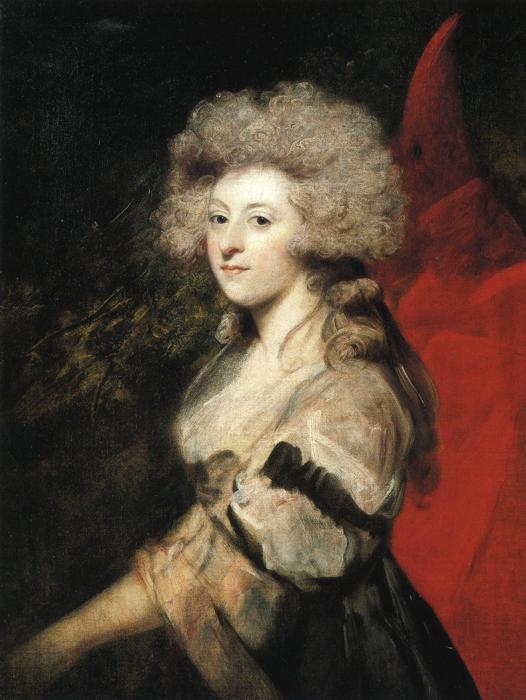Lover's Eye Jewellery
Jewellery has been a romantic gift for many centuries. Lover's eye jewellery is no different. First emerging in the Georgian period, these painted miniatures portrayed eyes, either alone or in pairs. Artists Richard Cosway and George Engleheart both specialised in miniatures and helped popularise the earliest forms of lover's eye jewellery.
In the few centuries since lover's eye jewellery first found popularity, it has faded from common knowledge. Jewellery enthusiasts and collectors familiarise themselves with specific types of jewellery such as lover's eye jewellery, but it has not maintained a significant role in the wider jewellery world.
History of Lover's Eye Jewellery
In 1785, Maria Anne Fitzherbert and George IV, the Prince of Wales, were married in a secret ceremony. Their union did not have King George III's approval due to Fitzherbert's Roman Catholic faith, excluding her from a role as a monarch. Fitzherbert's nephew, Cardinal Weld, convinced Pope Pius VII to assert their marital status as sacramentally valid. Their union was achieved after many years of courting, with the Prince of Wales ardently pursuing Fitzherbert.
The prince commissioned a lover's eye miniature to be made in his image and sent to Fitzgerald along with another in a string of love letters. The dainty portrait featured a single eye, painted to match the prince's appearance. After their illegal marriage, Fitzherbert had a miniature made of her own eye and gifted it to the prince on a pendant. Despite the eventual - legal and official - marriage of George IV to his cousin, Caroline of Brunswick, he supposedly continued to wear Fitzherbert's miniature. On his deathbed in 1830, George requested to be buried with Fitzherbert's eye miniature around his neck. This regal example of lover's eye jewellery was not the very first of its type, however.
These eye miniatures were popular expressions of romance in the Georgian era. The subtle pieces could be worn on rings, pendants, and brooches, allowing couples to keep their lover's image close. In a time before photography, gifts such as eye miniatures were an essential way of keeping a loved one close. Miniature portraits were popular ways to do this, although they lacked the focus and intimacy of an eye portrait alone.

Lover's Eye Meaning
These pieces of jewellery are inherently intimate. Most often, they were gifted between lovers. Courtship was a lengthy process, and having a memento of a loved one close at hand eased the loneliness somewhat. Equally, eye miniatures were able to capture a specific look or gaze from a lover which one could invoke with just a look.
These portraits were usually painted by hand onto small pieces of ivory, not much larger than a fingernail. Keeping them small like this allowed them to be portable, making distance a smaller obstacle to overcome in a budding relationship. Sometimes, eye miniatures were commissioned for the deceased, acting as a memento mori for their living relatives.
These portraits could be set into jewellery with locket compartments, often fit with a lock of the subject's hair. Hair jewellery was popular throughout the Georgian and Victorian eras, both as a romantic sentiment and a memento mori. The meaning of this jewellery is inherently very intimate, providing a way for people to remember those who mean the most to them.
Lover's Eye Brooch
The lover's eye brooch is typically small. The delicate portrait is usually set into a cluster-like setting, often surrounded with pearls or a thick metal border for added stability. These brooches are traditionally worn near the heart, keeping the loved one close.
This form of lover's eye jewellery was one of the more common styles, being versatile enough to be worn as a brooch or a pendant if a chain was fitted. Although the standard setting style was dainty and small, some lovers wanted their miniatures to go beyond a small size. There are some examples of lover's eye brooches that have ostentatious settings with many gemstones accenting the surrounding borders.

Lover's Eye Ring
Truly delicate examples of lover's eye miniatures can be found in the rings. Smaller portraits are common in these types of jewellery, with slimmer metal frames than one is likely to find in the brooches or the pendants.
The craftsmanship that went into these portraits required years of skill to perfect, with the finest points of the subject's features being carefully recreated. Such was the popularity of these miniatures that Queen Victoria commissioned a royal miniaturist in order to have pieces crafted as gifts to her own loved ones.
It is believed that there are roughly 1,000 genuine antique extant miniatures today. For this reason, as well as the general skill and materials used to create them, lover's eye jewellery is highly collectible today.


